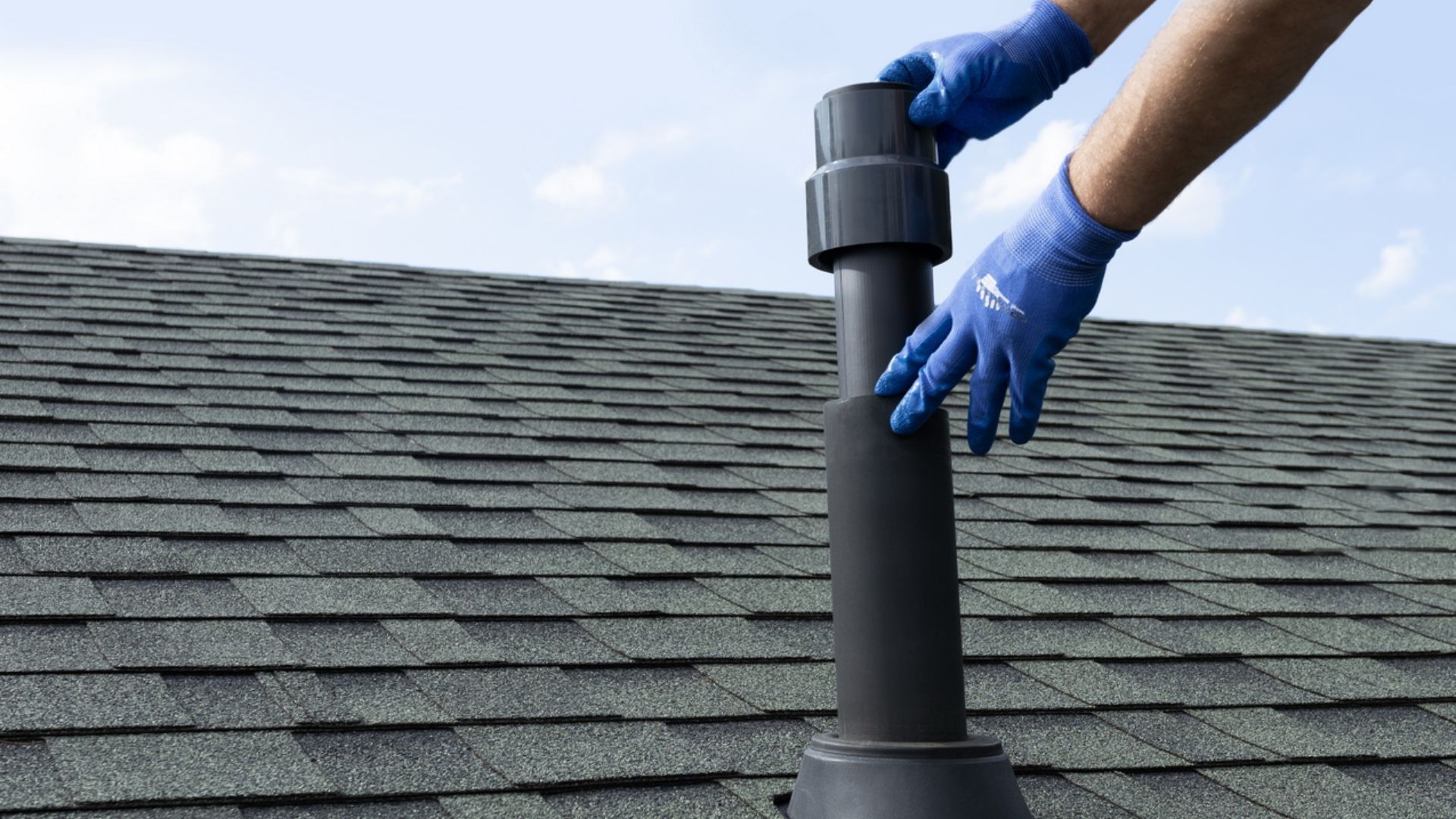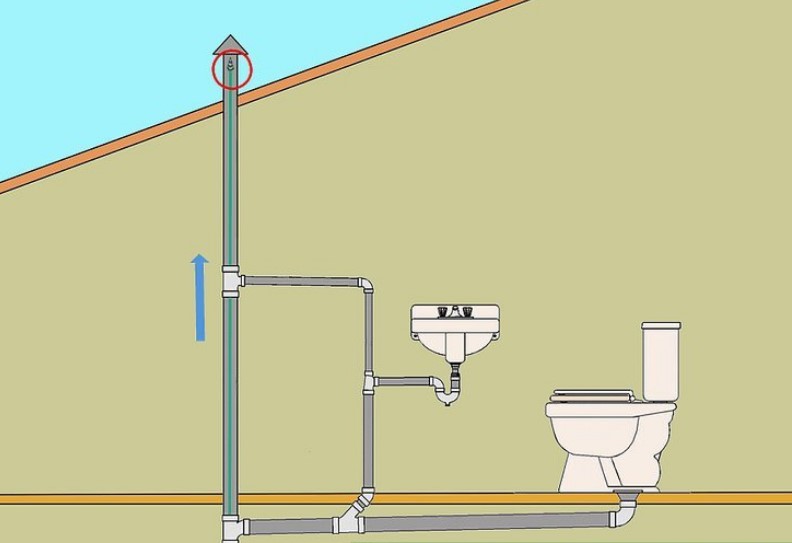Maintaining Correct Ventilation in Your Plumbing System: Why
Maintaining Correct Ventilation in Your Plumbing System: Why
Blog Article
We have unearthed this article pertaining to The Upsides of Proper Ventilation in Plumbing Design directly below on the web and believe it made good sense to talk about it with you here.

Correct ventilation in pipes systems is typically overlooked, yet it is vital for maintaining the performance and safety and security of your home's plumbing. Ventilation aids regulate air pressure, stop the build-up of harmful gases, and guarantee the reliable removal of waste. In this guide, we will discover the importance of correct pipes ventilation, how it works, and the benefits it brings to your plumbing system.
Comprehending Ventilation in Plumbing
Ventilation in plumbing refers to the network of pipes that permit air to flow through the drain system. These vents serve several purposes, including controling atmospheric pressure within the pipelines, preventing sewage system gases from going into the home, and assisting in the smooth flow of wastewater.
How Ventilation Works in Plumbing Solutions
Air Pressure Law
Proper air flow maintains balanced atmospheric pressure within the pipes system. When water moves via pipes, it displaces air. Without appropriate ventilation, this displacement can develop unfavorable stress, causing slow drains or siphoning of water from catches, which can create unpleasant odors to permeate right into the home.
Avoiding Drain Gas Build-up
Among the most vital features of pipes vents is to prevent sewer gases, such as methane and hydrogen sulfide, from gathering within the home. These gases can present severe health and wellness risks and are very combustible. Vent pipelines permit these gases to get away securely outside.
Helping in Waste Removal
Air flow assists in the reliable elimination of wastewater by preventing airlocks in the water drainage system. When air can move easily with the vents, it enables water and waste to stream efficiently via the pipelines, minimizing the risk of obstructions and back-ups.
Types of Pipes Vents
Main Stack Vent
The main stack vent, also referred to as the air vent pile, is the main vent in a pipes system. It prolongs from the main drain line up through the roof covering, enabling gases to escape and fresh air to go into the system.
Branch Vent
Branch vents attach to the main stack air vent and offer individual fixtures, such as sinks, bathrooms, and showers. These vents make certain that each fixture has sufficient air flow to operate properly.
Air Admittance Valve (AAV).
An Air Admittance Valve (AAV) is a one-way valve that allows air to get in the plumbing system without the demand for a standard vent pipe prolonging via the roofing system. AAVs are frequently made use of in renovations or areas where installing a conventional vent is unwise.
Indications of Poor Ventilation in Plumbing.
Slow Draining Fixtures.
If your sinks, tubs, or commodes are draining pipes gradually, maybe a sign of bad air flow. Insufficient air circulation can create a vacuum cleaner result, making it challenging for water to drain pipes properly.
Gurgling Seems.
Gurgling audios originating from drains are typically an outcome of air being drawn through water traps because of unfavorable pressure in the pipelines. This is a clear sign of inadequate ventilation.
Undesirable Smells.
Sewage system odors inside your home are a warning that your plumbing system is not effectively aerated. This could suggest that sewage system gases are not being adequately vented outside, resulting in potentially dangerous conditions.
Common Ventilation Errors.
Inadequate Vent Sizing.
Utilizing small air vent pipes can bring about poor air circulation and stress imbalances in the system. It's necessary to utilize vents that meet the specific needs of your pipes system.
Improper Vent Placement.
Placing vents also far from the fixtures they serve can minimize their efficiency. Appropriate placement makes sure that air can stream easily and efficiently through the system.
Disregarding Code Needs.
Building ordinance give certain standards for pipes ventilation. Overlooking these codes can cause a system that falls short to function correctly and might cause pricey repairs or carcinogen.
Advantages of Appropriate Ventilation.
Improved System Effectiveness.
Effectively ventilated plumbing systems run extra efficiently, with less obstructions, faster draining, and much less strain on the pipes. This efficiency extends the lifespan of the plumbing system.
Improved Air Quality.
By avoiding drain gases from entering your home, proper ventilation contributes to far better interior air high quality, making your living atmosphere healthier and extra comfortable.
Avoiding Water Damages.
Adequate ventilation assists avoid water from being siphoned out of catches, which can cause drain gases getting in the home and causing water damage over time.
Actions to Make Certain Correct Air Flow.
Consulting Plumbing Codes.
Constantly consult neighborhood plumbing codes when designing or customizing your pipes system. These codes offer the needed standards for proper venting and guarantee your system fulfills safety requirements.
Normal Inspection and Maintenance.
Routine inspections can help identify potential ventilation problems prior to they become major troubles. Upkeep jobs, such as cleaning air vent pipes and looking for obstructions, are necessary for maintaining the system in good working order.
Expert Installation.
For new setups or significant modifications, it's wise to work with a specialist plumbing. They have the experience to make certain the air flow system is appropriately developed and mounted according to code.
Final thought.
Appropriate ventilation is an important component of any pipes system, making certain that it functions efficiently and securely. By understanding the importance of air flow, identifying the indications of bad ventilation, and taking steps to keep your system, you can stop expensive problems and secure your home's air quality.
4 Things You Should Know About Your Plumbing Vents
What Plumbing Vents Are
Also called a vent stack, a plumbing vent is a vertical pipe attached to your drain line that runs through your roof. The plumbing vent pipe, or plumbing air vent, removes gas and odors from your plumbing system and allows fresh air to enter the pipes, helping the water to flow out of the drain pipes.
What Plumbing Vents Do
Plumbing vents have two basic functions. One of which is to allow unpleasant smelling wastewater and sewer gasses to escape your plumbing system instead of entering your home. Plumbing vent pipes are typically located on roofs, away from windows, to ensure the fumes exit the home completely.
The other function of the plumbing vent is to move fresh air into your plumbing system. This helps move water through every plumbing fixture in your house, like toilets and sink drains. Think of the way in which you need to let a little air into the bottle as you pour soda in order to make the drink flow smoothly.
Different Types of Plumbing Vents
True vent: This is the most common vent option. In simplest terms, a true vent is a vertical pipe attached to your drain line that exits through the roof. They often function as the main vent that other fixtures can connect to. Re-vent pipe or auxiliary vent: Attached to the drain line near specific plumbing fixtures, re-vent pipes run up and over to connect to the main vent. Common vent: Two plumbing fixtures installed on opposite sides of a wall are typically tied into the vent stack using something known as a sanitary cross. Wet vent: This venting option operates as a drain pipe and a vent at the same time. Wet vent drainage systems drain water from one fixture while venting the air from another. Although they’ve been used for over 100 years, wet vent systems have only recently been added to the plumbing code in many areas. If you’re planning on installing one in a bathroom remodel, make sure you check your local code prior to construction. Loop vent: For free-standing fixtures like kitchen island sinks, loop vents are ideal. These vent pipes run under the floor, rise from the P-trap, and create a loop inside the cabinet sink. Air admittance valve: An AAV is a one-way mechanical valve typically installed at the site of the plumbing fixture. AAVs allow venting to occur without having to tie into a larger venting system. They’re ideal for venting fixtures where you aren’t able to easily connect to an existing vent system. Common Plumbing Vent Issues
Although vent pipes typically don’t have water flowing through them, they’re still subject to many typical plumbing issues. For example, clogs are one of the most common problems associated with sewer vent pipes. If your vent pipe gets clogged, all of your plumbing fixtures tied into the vent stack will be affected.
A sink with a slow drain that bubbles and gurgles or a strong sewage smell around your toilet are both indicators that your toilet vent pipe is clogged. Because most vent pipes exit through the roof, old leaves, twigs or even a bird’s nest could be clogging the pipe.
Clogs in your vent pipe system cause a buildup of negative pressure, meaning that water won’t be able to flow out of your home very well. It’s similar to putting your finger over the opening of a straw to trap water inside. When you remove your finger, the water is able to flow out of the straw.
If you suspect you have any blockage in your vent, make sure you have a professional come examine the situation. Left unchecked, a blocked air vent can lead to other costly repairs, like leaks and sediment buildup.
Under Pressure
Pipe vents are essential aspects of a home’s plumbing system. Owning a home means learning about all sorts of things you never put much thought into before. But by understanding as much as you can about the important systems of your home, you can keep those budgets intact and those anxiety levels low.
https://www.homeserve.com/en-us/blog/home-improvement/plumbing-vents/

We had been shown that article on Why Plumbing Air Vents Are Important from a friend on another web address. Are you aware of another person who is in to the topic? Why not promote it. Kudos for your time. Kindly check up our blog back soon.
Book Inspection Report this page